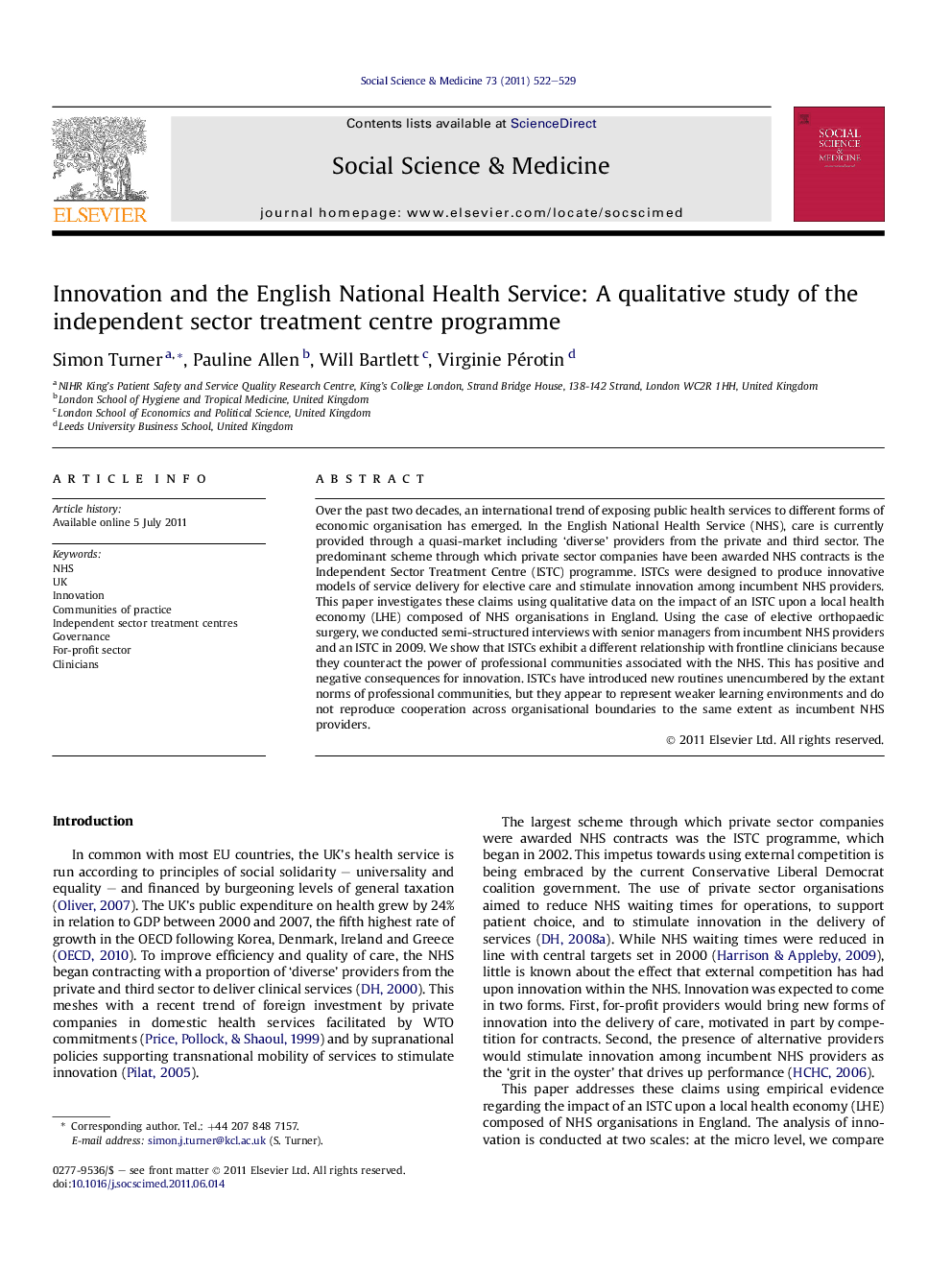| Article ID | Journal | Published Year | Pages | File Type |
|---|---|---|---|---|
| 952919 | Social Science & Medicine | 2011 | 8 Pages |
Over the past two decades, an international trend of exposing public health services to different forms of economic organisation has emerged. In the English National Health Service (NHS), care is currently provided through a quasi-market including ‘diverse’ providers from the private and third sector. The predominant scheme through which private sector companies have been awarded NHS contracts is the Independent Sector Treatment Centre (ISTC) programme. ISTCs were designed to produce innovative models of service delivery for elective care and stimulate innovation among incumbent NHS providers. This paper investigates these claims using qualitative data on the impact of an ISTC upon a local health economy (LHE) composed of NHS organisations in England. Using the case of elective orthopaedic surgery, we conducted semi-structured interviews with senior managers from incumbent NHS providers and an ISTC in 2009. We show that ISTCs exhibit a different relationship with frontline clinicians because they counteract the power of professional communities associated with the NHS. This has positive and negative consequences for innovation. ISTCs have introduced new routines unencumbered by the extant norms of professional communities, but they appear to represent weaker learning environments and do not reproduce cooperation across organisational boundaries to the same extent as incumbent NHS providers.
► For-profit providers have had positive effects upon some aspects of innovation. ► ISTCs have introduced new routines unencumbered by power of professional communities. ► NHS-owned hospitals provide a stronger learning environment for clinicians than ISTCs. ► Professional collaboration across NHS hospitals not evident in relations with ISTCs.
